ClickUp vs Todoist: Comparison for Project Management, Business Use & Time Tracking

You’re managing multiple projects—planning marketing campaigns, coordinating remote teams, and juggling personal to-dos. You’ve narrowed your choices to ClickUp vs Todoist, but you’re unsure which tool will streamline your workflow, track time effectively, and support your growing business. This article demystifies the ClickUp vs Todoist debate. We’ll compare features, pricing, project management capabilities, business use cases, and time tracking. We’ll also reveal how integrating Everhour’s time tracker elevates whichever tool you choose, turning your task manager into a productivity powerhouse.
What Are ClickUp and Todoist?
🔴 Todoist: A streamlined task manager focusing on simplicity and speed. Organize tasks into projects, sections, tasks, and subtasks. Todoist supports labels, filters, priority levels, recurring tasks, and basic collaboration. It’s popular among individuals and small teams for personal productivity and lightweight task management.
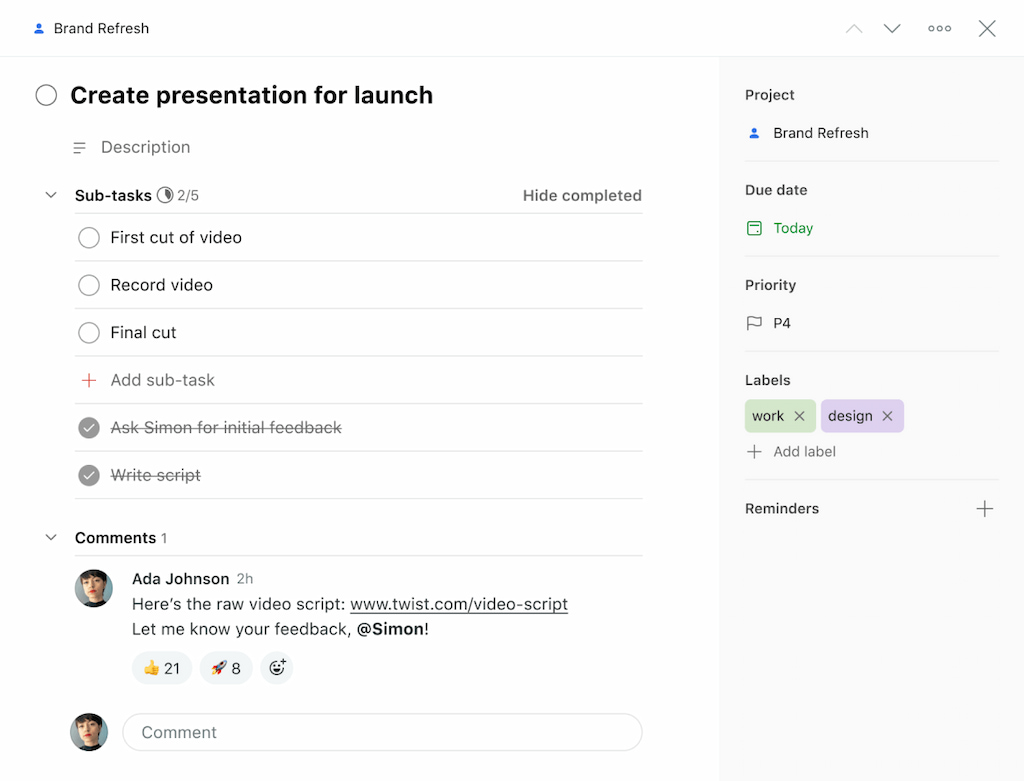
🔵 ClickUp: An all-in-one productivity platform offering task management, project planning, docs, goals, chat, and native ClickUp time tracking. Its hierarchical structure organizes workspaces into spaces, folders, lists, tasks, and subtasks. ClickUp supports multiple views (list, board, Gantt, timeline, calendar), advanced automations, custom fields, and comprehensive reporting. It’s designed for teams and businesses needing robust project management (more on that in our ClickUp project management guide).
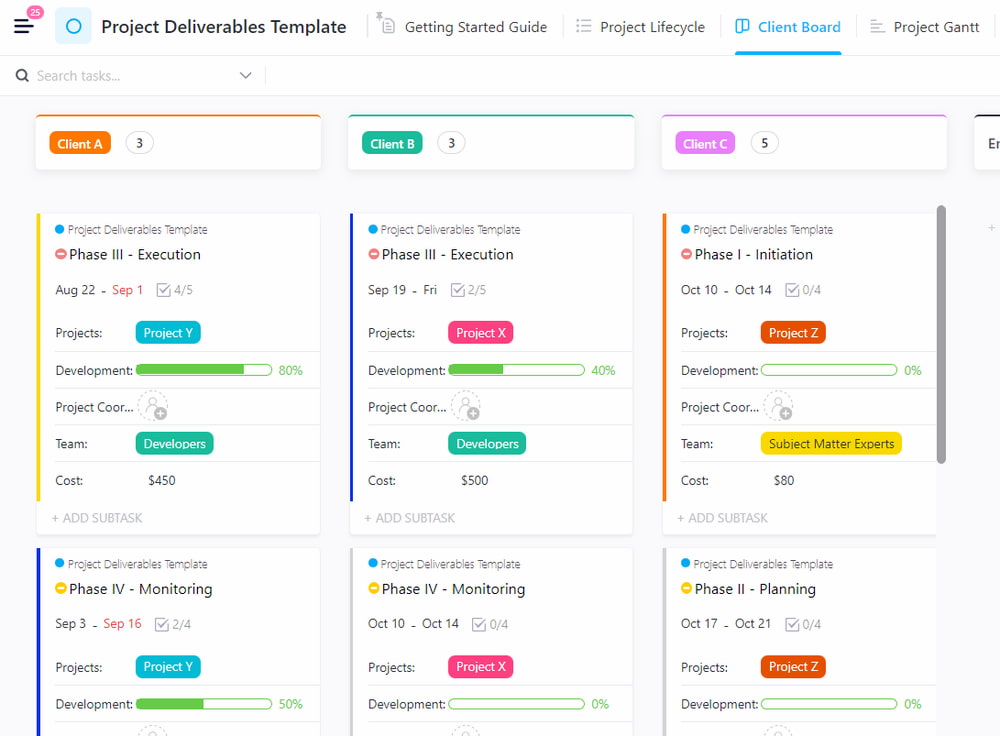
ClickUp vs Todoist: Feature & Plan Comparisons
| Feature | ClickUp | Todoist |
|---|---|---|
| 📃 Task hierarchy | Workspaces → Spaces → Folders → Lists → Tasks → Subtasks | Projects → Sections → Tasks → Subtasks |
| 🌟 Views | List, Board, Gantt, Timeline, Calendar, Mind Map, Table, Map | List, Board (basic), Calendar (Pro), Productivity view (Karma) |
| 📊 Project management | Dependencies, time estimates, milestones, tasks relations, docs, goals | Basic tasks and projects, recurring tasks; no dependencies |
| 🤝 Collaboration | Real-time chat, comments, mentions, roles and permissions, Guest access | Comments, task assignments; limited role management |
| 🤖 Automation | Built-in automations (if/then rules), templates, recurring tasks | Limited; relies on Zapier and natural language scheduling |
| ⌛ Time tracking | Native timer; time estimates; timesheets; Everhour integration for advanced reporting | No native time tracking; Everhour integration via browser extension |
| 📈 Reports & dashboards | Custom dashboards; widgets for task statuses, time tracked, sprints | Personal productivity Karma and activity log; no team dashboards |
| 📄 Docs & note taking | Built-in docs linked to tasks | Notes within tasks only |
| 🔁 Integrations | Slack, Teams, Gmail, GitHub, Everhour, Zapier, Google Drive, Zoom, and hundreds more | Slack, Google Calendar, Gmail, Outlook, Zapier, Everhour; fewer direct integrations |
| 💰 Pricing | Free (unlimited tasks, members, 100MB storage); Unlimited $5/user/month; Business $12/user/month; Business Plus $19/user/month; Enterprise custom | Free (5 projects, 5 collaborators); Pro $4/month; Business $6/user/month |
ClickUp vs Todoist: Features Breakdown
🗂 Project management
ClickUp
- 🔗 Task relationships & dependencies: Mark tasks as blocking or blocked; create a clear order for tasks.
- 📊 Gantt charts & timelines: Visualize projects over time; adjust deadlines by dragging bars; see dependencies.
- 🎯 Goals & milestones: Set measurable targets linked to tasks; track progress toward objectives.
- 🏃♂️ Sprint management: Assign sprints to lists; track workload, burn-down charts, velocity—ideal for Agile teams.
- 👥 Resource management: Allocate tasks based on workload; view team capacities.
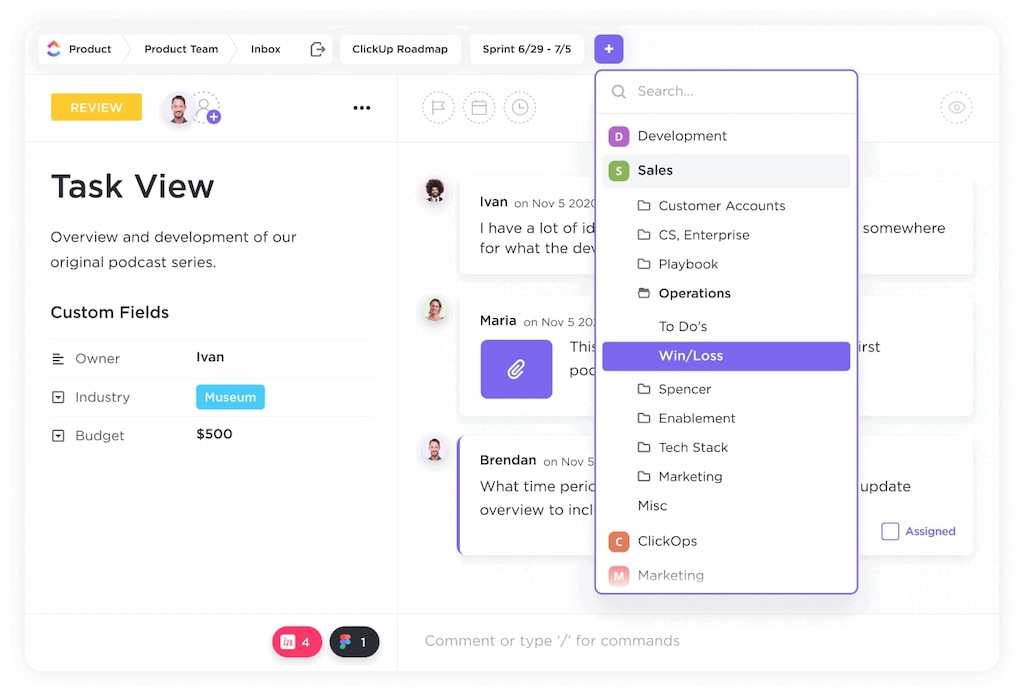
Todoist
- 📋 Tasks & subtasks: Break down bigger tasks; use sections to group by stage or category.
- 🏷 Labels & filters: Categorize tasks and create custom views.
- 🔁 Recurring tasks: Set tasks to repeat automatically (e.g., “every Monday”).
- 🗂 Sections & projects: Use projects for goals and sections for phases.
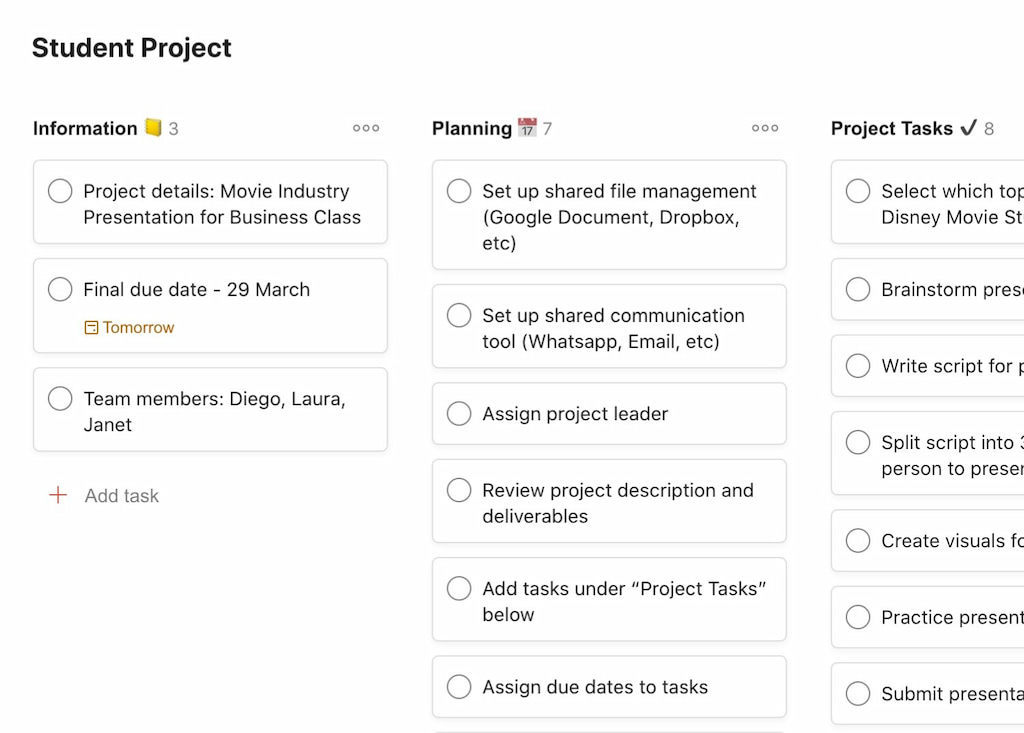
Verdict: ClickUp is more robust for project management, while Todoist project management works for simple task lists and small project coordination.
🤝 Business use & collaboration
ClickUp
- 🔐 Roles & permissions: Control who can view, comment, or edit tasks; share specific lists or boards with guests.
- 🏢 Spaces for departments: Separate spaces for Marketing, Development, HR, with unique permissions.
- 📈 Advanced reporting: Track project progress, time spent, budgets, and workload.
- 📚 Docs & knowledge base: Create SOPs, meeting notes, policies, and link tasks to relevant docs.
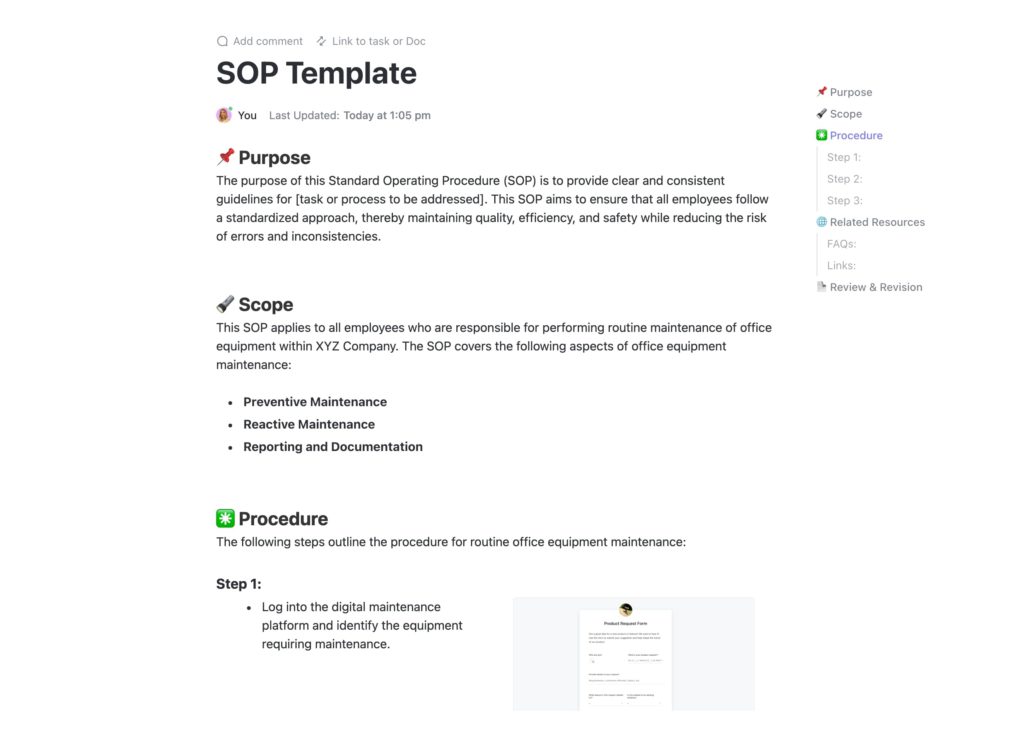
Todoist
- 👥 Small team collaboration: Share projects with up to 25 people; assign tasks and comment.
- 🔑 Admin & member roles: Business plan allows separate roles and team billing.
- 📝 Activity log: Track project activity history.
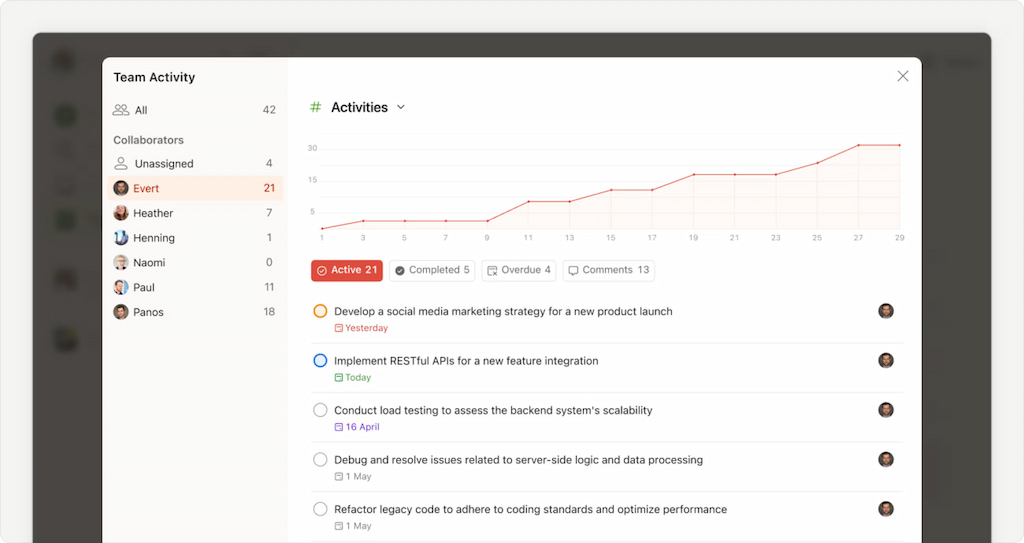
Verdict: ClickUp suits cross-functional teams and multi-department businesses. Todoist is ideal for small teams or individuals.
⚙️ Automation & workflows
ClickUp
- 🔄 Rules & triggers: Example: “When status changes to ‘Done,’ assign to reviewer.”
- 📑 ClickUp templates: Reusable templates for tasks, lists, and projects.
- ⏰ Recurring automations: Duplicate tasks or lists periodically.
- 🔗 ClickUp integrations: Built-in automations with Slack, email, and more.
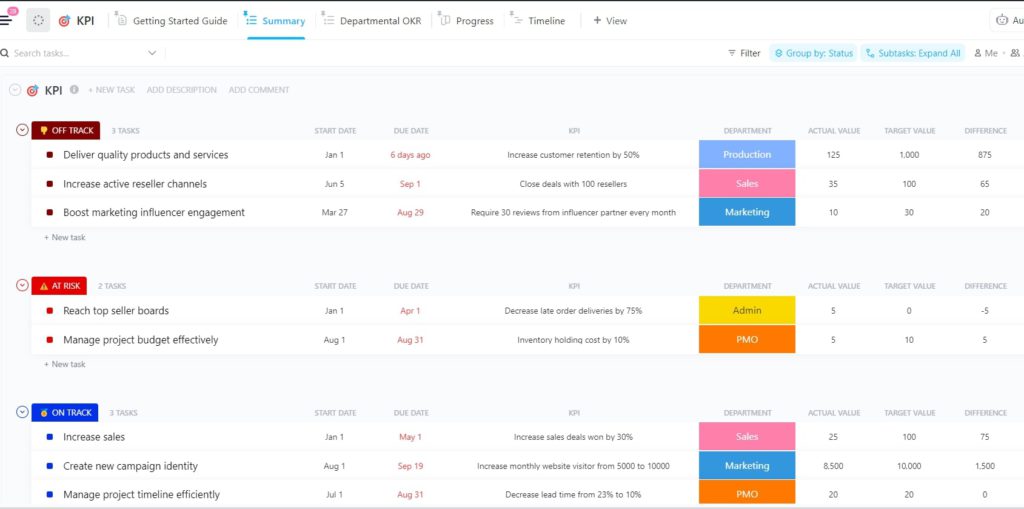
Todoist
- 🗣 Natural language: Automatically sets due dates from input text.
- ⚡ Simpler automation: Uses third-party integrations like Zapier.
Verdict: ClickUp’s built-in automations save time and reduce errors. Todoist relies on external tools.
⏱ Time tracking
ClickUp
- ⏳ Native timer: Start/stop timers on tasks; manually add time entries.
- 🗂 Timesheets: View time tracked by member or task.
- ⚠️ Time estimates & alerts: Set estimates; get notifications when exceeded.
- 💼 Everhour integration: Advanced reporting, budgets, billable vs non-billable hours, invoicing (ClickUp time tracking integration)
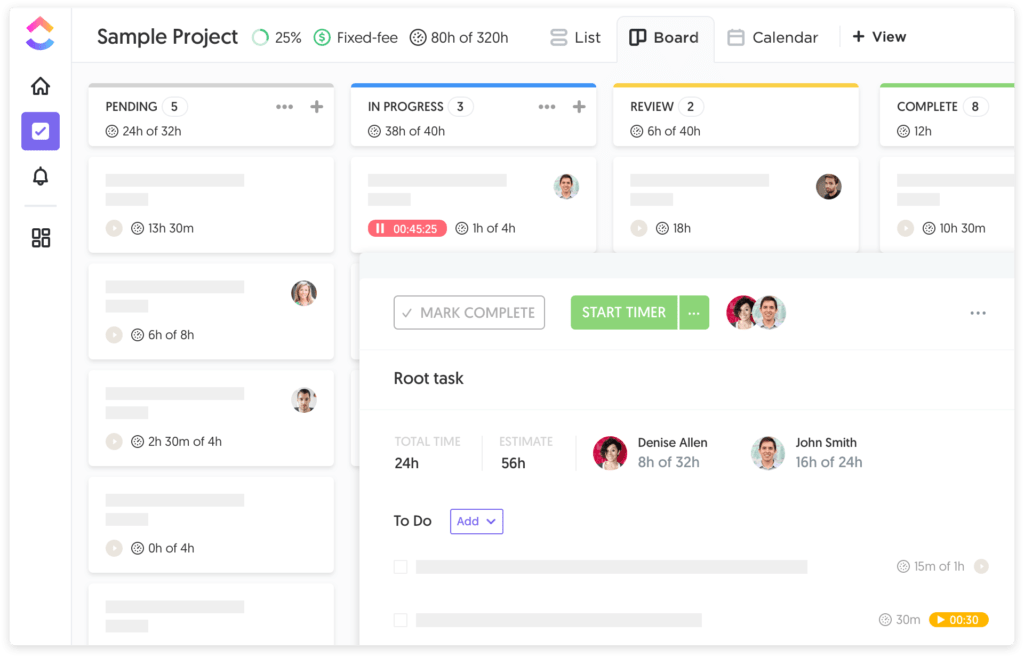
Todoist
- ❌ No built-in time tracking: Requires Everhour, Pomodone, or Toggl.
- 💻 Everhour integration: Adds timers to tasks and generates reports (Todoist time tracking integration).

Verdict: ClickUp offers native time tracking. Todoist depends on integrations. Everhour enhances both tools for reporting, budgets, and alerts.
Use Cases: Personal vs Business
👤 Personal use
ClickUp
- 🚀 Complex personal projects: launching a startup, writing a book, planning a wedding.
- 📚 Personal knowledge base with docs and tasks.
- 📅 Habit tracking using recurring tasks and goals.
- 🧠 Visualization via mind maps and Gantt charts.
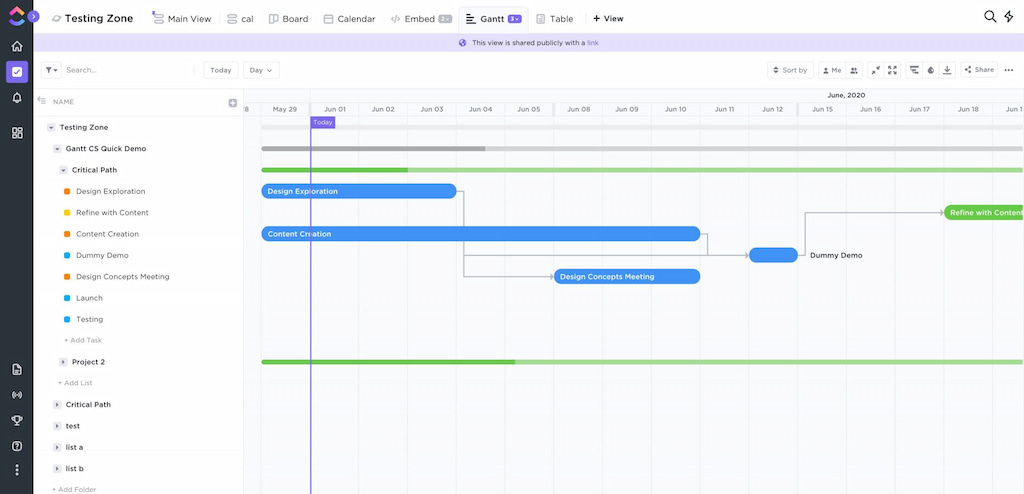
Todoist
- 📝 Daily to-do lists: errands, work tasks, personal goals.
- 🔁 Habits: recurring tasks like “Exercise,” “Meditate,” “Read.”
- 📂 Simple projects: organize by sections, assign due dates.
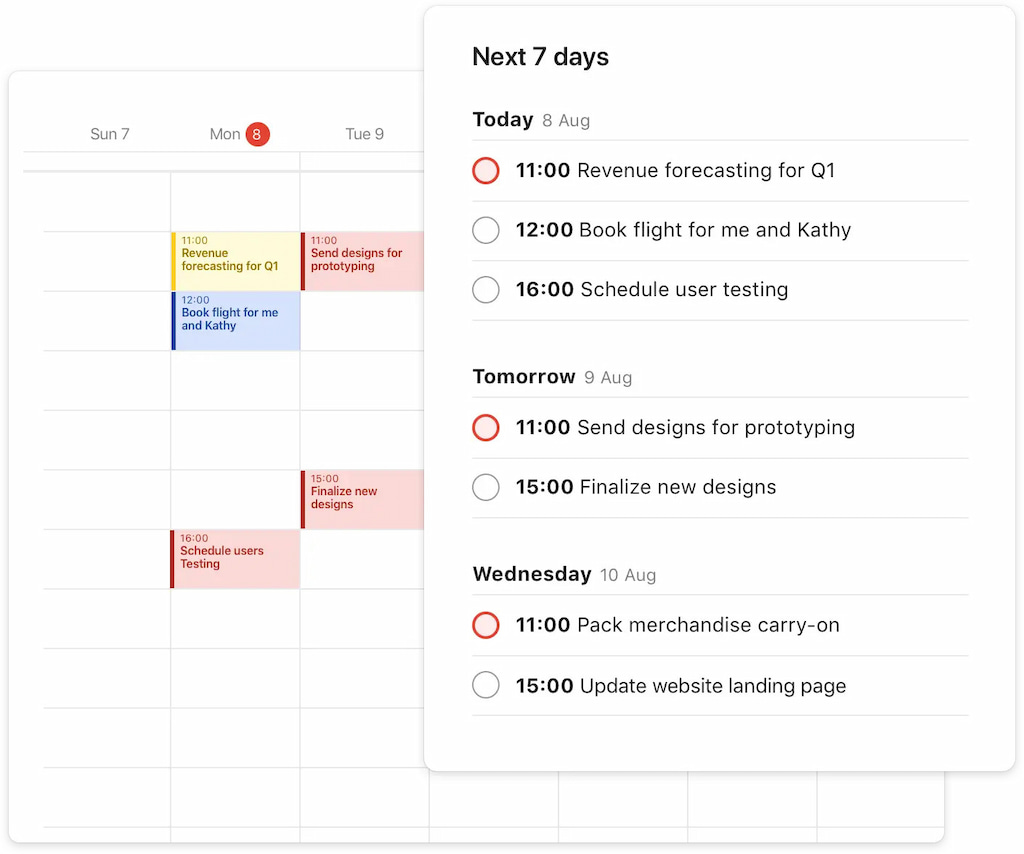
Verdict: If your personal productivity needs are straightforward, Todoist is ideal. If you manage multifaceted personal projects, ClickUp’s features may be useful.
💼 Business use
ClickUp
- 📊 For teams needing project management, resource allocation, and cross-department collaboration.
- 🏃♂️ Agile software teams using sprints, backlog, and Gantt charts.
- 📅 Marketing teams managing campaigns, content calendars, and client projects.
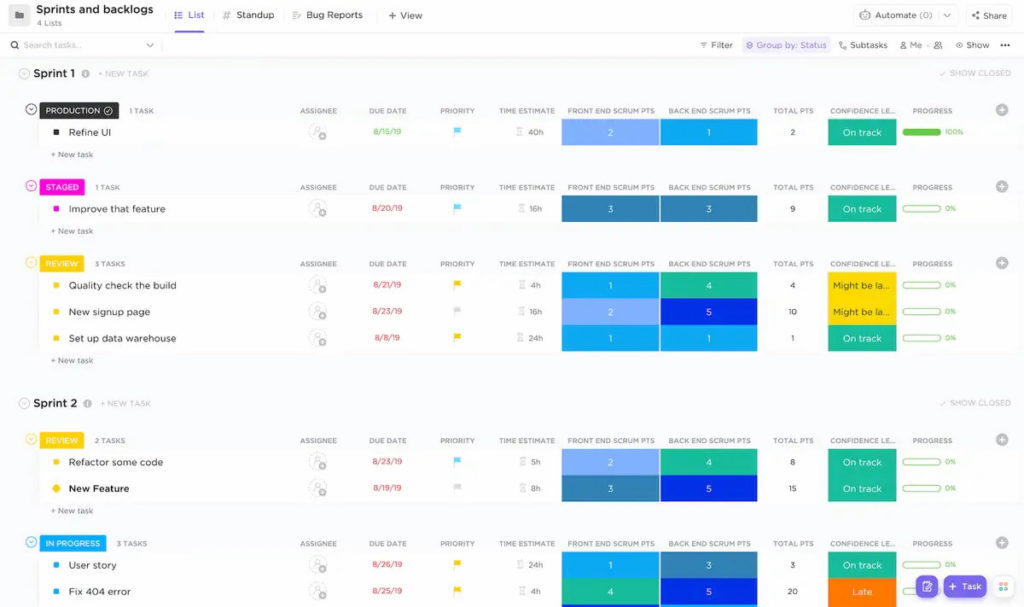
Todoist
- 👥 Small teams with straightforward projects (e.g., client support tasks, checklists).
- 📈 Marketing teams with simple content production.
- 🧑💻 Freelancers collaborating with one or two clients.
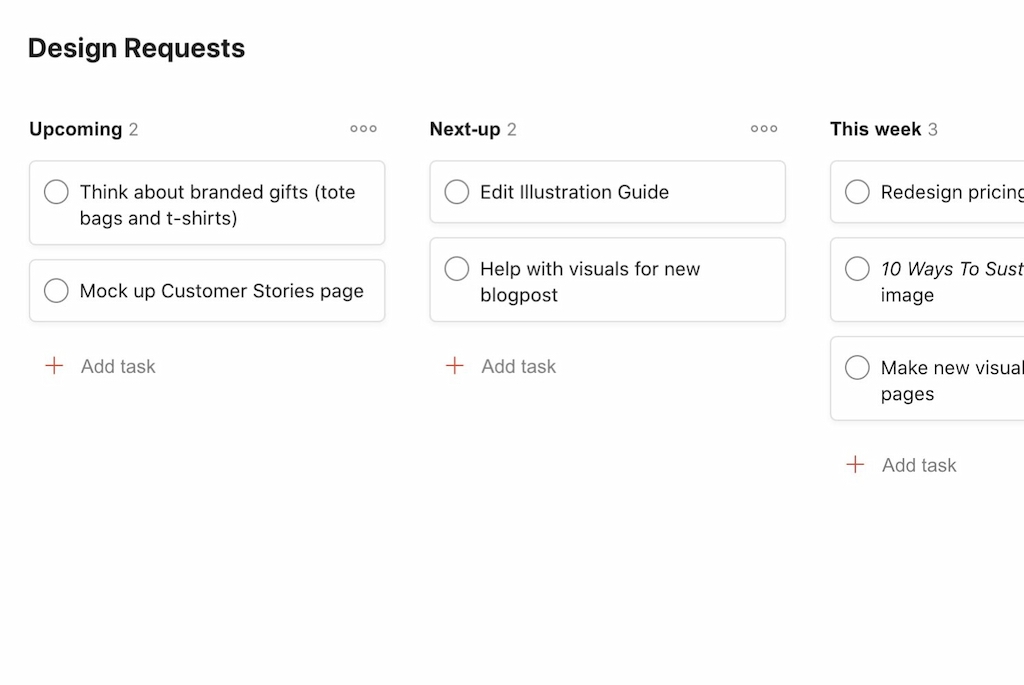
Verdict: ClickUp is better for structured business operations; Todoist can handle smaller team tasks and checklists.
Workflow Integration: Everhour
Everhour is a time tracking tool that integrates with both ClickUp and Todoist. Here’s how it enhances your workflow:
Why Everhour?
- Detailed time logs: Track time spent on each task within your chosen project manager.
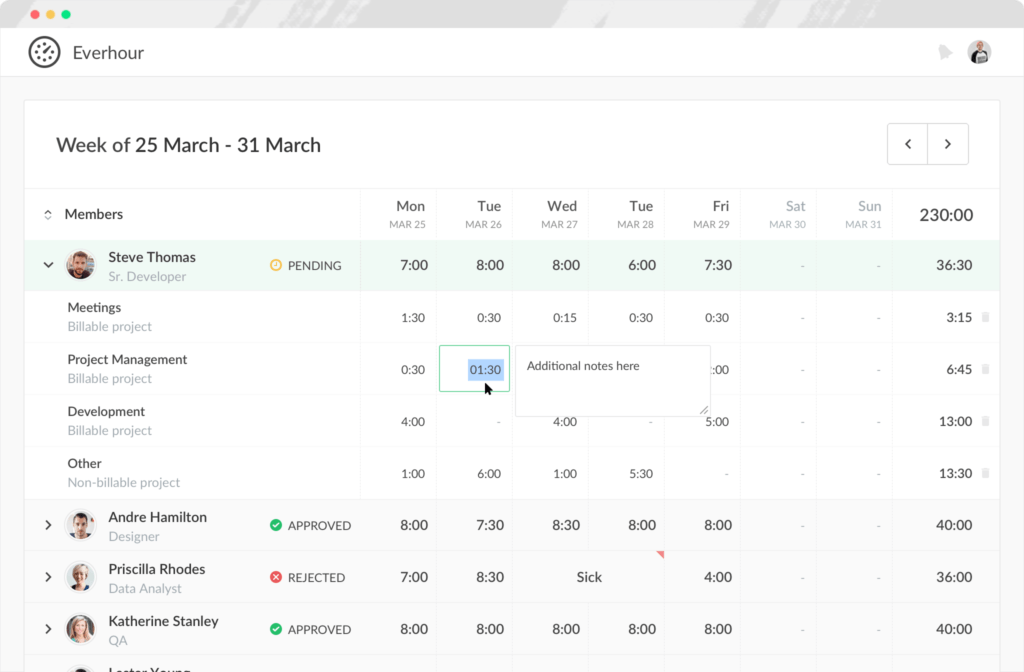
- Budgets & alerts: Set budgets for tasks or projects; receive alerts when approaching limits.
- Billable hours: Distinguish billable vs non-billable tasks. Generate invoices directly from time logs.
- Resource planning: Identify which team members are overallocated.
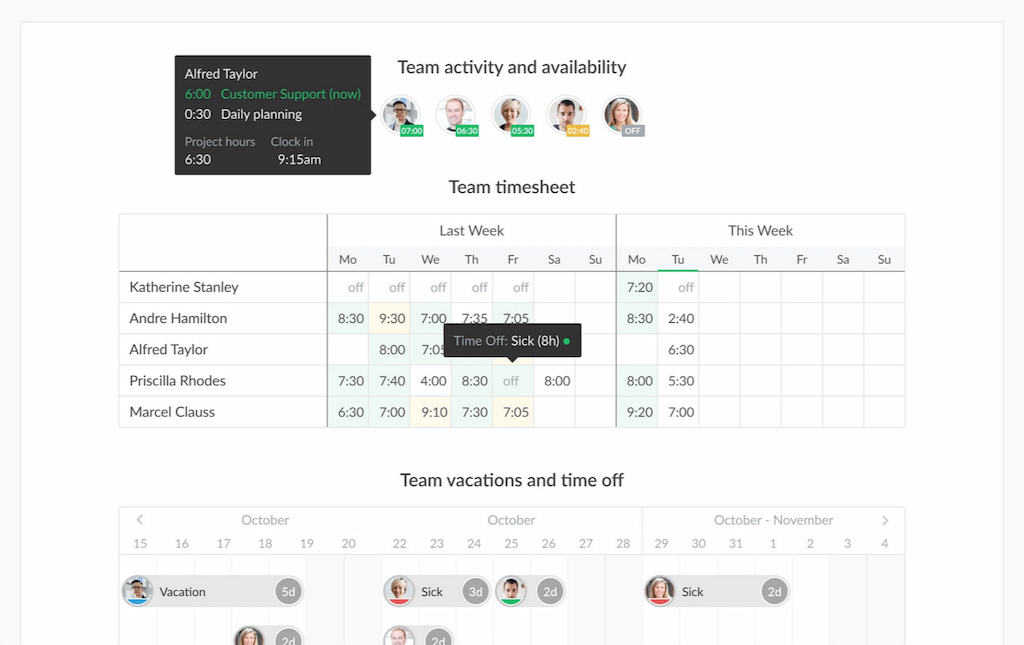
- Easy reporting: Summarize by project, client, or user.
Integration steps
- Install extension: Download the Everhour browser extension.
- Connect accounts: Link Everhour to ClickUp or Todoist.
- Time tracking buttons: Timers appear next to tasks.
- Report & analyze: Use Everhour’s dashboard to view time, budgets, and team utilization.
Example use case: A design agency uses ClickUp to manage client projects. Each task has an estimate in ClickUp. Team members use Everhour timers to track time. When actual time exceeds the estimate, Everhour flags the task. The project manager adjusts deadlines or budgets, ensuring projects remain profitable.
Tips & Best Practices
- 🧩 Assess project complexity: Simple personal tasks → Todoist. Complex or team projects → ClickUp.
- 🌱 Start small: In ClickUp, create one space and a few lists. In Todoist, organize tasks into a few projects with clear labels.
- 🔗 Integrate essential tools: Use Everhour for time tracking from Day 1. Connect Slack, email, and calendars to avoid duplication.
- 📑 Use templates: ClickUp provides templates for Agile boards, sales CRM, content management. Todoist offers templates for meeting agendas, personal growth, and education.
- ⚙️ Automate: In ClickUp, set up automations for recurring tasks and assignments. In Todoist, use natural language or Zapier to automate task creation from forms or emails.
- 📆 Regular reviews: Weekly review of tasks and goals. Archive or delete completed tasks. Adjust workloads using ClickUp’s workload view or Todoist’s Karma trend.
- 🏷️ Set clear tags/labels: In ClickUp, use custom fields for priority, complexity, or client. In Todoist, use labels like @Waiting, @Phone, and filters for views.
- 👀 Utilize multiple views: ClickUp: Switch between list (for detail) and Gantt (for timeline). Todoist: Use the Board view for large projects, but keep list for daily tasks.
- 🤝 Share responsibility: Assign tasks clearly. In ClickUp, use comments and chat. In Todoist, assign tasks with a due date and label.
- 🆓 Explore free trials: Try free or trial versions to understand fit. Upgrade if features like automations and advanced reporting are needed.
FAQ: ClickUp vs Todoist
Which is easier to use?
Todoist is simpler and easier for quick tasks. ClickUp has more features but a steeper learning curve.
Is Todoist cheaper than ClickUp?
Yes. Todoist’s Pro plan is around $4/month. ClickUp’s Unlimited plan is $5/user/month, but offers more features.
Does ClickUp support Kanban?
Yes. ClickUp’s board view functions like Kanban. Additional views, like Gantt and timeline, support project planning.
Does Todoist have Gantt charts?
No. Todoist doesn’t support timeline or Gantt charts; you’d need third-party tools.
Can I use both?
Yes. Some individuals use Todoist for personal tasks and ClickUp for work projects. The challenge is managing both interfaces.
Is there a free plan?
Both offer free plans. ClickUp’s free plan includes unlimited tasks and members; Todoist’s free plan is more limited.
Do they have mobile apps?
Yes. Both provide iOS and Android apps. Todoist’s apps are lightweight; ClickUp’s feature-rich mobile app may be slower on older devices.
Which has better offline support?
Todoist. The mobile app supports offline editing with seamless syncing. ClickUp’s offline features are limited.
How does Everhour pricing work?
Everhour charges $10 per user per month. It integrates with multiple project management tools, offering consolidated reports.
Which is better for business?
ClickUp. It offers project management, advanced collaboration, customization, and integrated docs. Todoist suits small teams or individuals.
ClickUp vs Todoist: Final Thoughts
ClickUp and Todoist both enhance productivity, but they target different audiences. Todoist is your go-to if you want a lightweight, user-friendly task manager for personal use or small teams. Its intuitive design, quick task entry, and affordable pricing make it perfect for managing daily to-dos. ClickUp, however, is a powerhouse for teams and businesses. It supports detailed project planning, multiple views, automations, built-in time tracking, and extensive collaboration features.
While ClickUp requires more setup and learning, its flexibility pays off for complex workflows. Todoist keeps things simple—and sometimes that’s exactly what you need. Whichever tool fits your style, integrating Everhour takes your productivity further.
Everhour fills the time tracking gap, offering detailed reports, budget monitoring, and invoicing capability. Start by mapping your tasks and workflows, integrate Everhour, and see which combination boosts your efficiency.
Check out our breakdowns of Trello vs Todoist and Monday vs Todoist for more insights!
